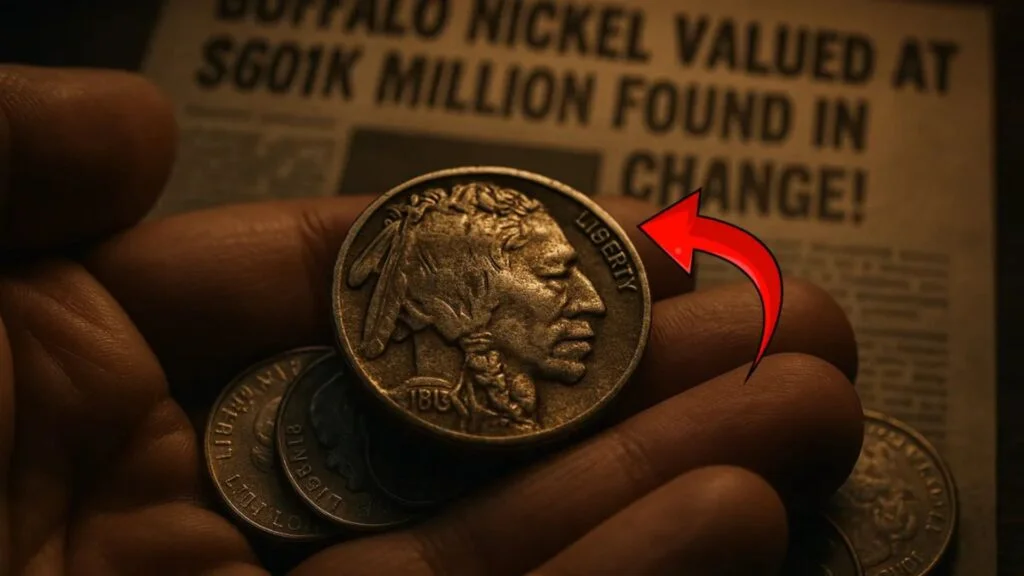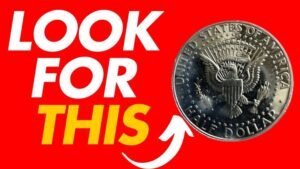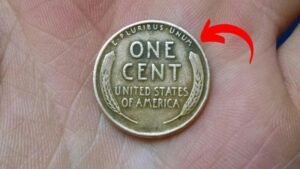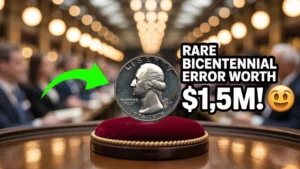Imagine finding a coin in your pocket worth $601,000. The Buffalo Nickel, a humble five-cent piece, hides a secret that could change your life. This isn’t just pocket change—it’s a treasure with a thrilling past. Read on to uncover its mystery and why it’s still out there, waiting to be found.
What Is the Buffalo Nickel?
The Buffalo Nickel, also called the Indian Head Nickel, is a five-cent coin minted from 1913 to 1938. Its rugged design—an American bison and a Native American profile—captures the spirit of the Wild West. But some of these coins are worth far more than their face value. Why? A rare error makes certain ones a numismatist’s dream.
The Fascinating History of the Buffalo Nickel
In 1913, the U.S. Mint unveiled the Buffalo Nickel, designed by James Earle Fraser. The coin’s bold imagery honored America’s frontier heritage. The bison, inspired by a real animal named Black Diamond, symbolized the vanishing West. Yet, production flaws led to rare variations that collectors now chase with feverish excitement.
A Design Born from Controversy
Fraser’s design wasn’t without drama. The original coin wore down quickly, frustrating vendors. The Mint tweaked it, but a few early errors slipped through—like the 1916 Doubled Die or the 1937-D Three-Legged Buffalo. These mistakes turned ordinary nickels into legendary treasures, sparking a frenzy among collectors.
Key Buffalo Nickel Variants
| Variant | Year | Estimated Value | Unique Feature |
|---|---|---|---|
| 1916 Doubled Die | 1916 | Up to $601,000 | Die error doubles design elements |
| 1937-D Three-Legged | 1937 | $500–$100,000 | Missing front leg on bison |
| 1918/7-D Overdate | 1918 | $20,000–$350,000 | Date error from die overstamp |
Why the Buffalo Nickel Is Worth a Fortune
Certain Buffalo Nickels fetch astronomical prices due to their rarity and historical quirks. The 1916 Doubled Die, for instance, can sell for $601,000 at auction because only a handful exist. These coins are still in circulation, meaning you could stumble across one in everyday change. The thrill of finding such a gem keeps collectors hooked.
Rarity Meets Demand
The value comes from scarcity and condition. Coins in mint condition or with unique errors are prized. Auction records show a 1916 Doubled Die sold for $601,000 in 2023, proving their allure. High demand from numismatists drives prices higher, making these coins a potential windfall.
How to Spot a Valuable Buffalo Nickel
You don’t need to be an expert to hunt for a valuable Buffalo Nickel. Start by checking pocket change or inherited coin collections. Look for key dates like 1916, 1918, or 1937. A magnifying glass helps spot errors like doubled designs or missing legs. Grading services like PCGS or NGC can confirm a coin’s authenticity and value.
Steps to Identify a Rare Coin
- Check the Date: Look for 1916, 1918/7, or 1937-D.
- Inspect the Design: Use a loupe to spot doubling or missing legs.
- Assess Condition: Worn coins are less valuable; pristine ones are gold.
- Consult Experts: Professional grading boosts a coin’s market value.
Jaw-Dropping Facts About the Buffalo Nickel
The Buffalo Nickel isn’t just a coin—it’s a piece of history with surprising stories. Here are some facts that’ll leave you stunned:
- The bison model, Black Diamond, lived in the Bronx Zoo.
- Some 1937-D nickels were intentionally altered to mimic the rare Three-Legged error.
- Only 1.2 million 1916 nickels were minted, making them scarce.
- A single 1918/7-D coin sold for $350,000 in 2021.
- These coins are still found in circulation, fueling modern treasure hunts.
Auction Records for Buffalo Nickels
| Coin | Auction Year | Sale Price | Notes |
|---|---|---|---|
| 1916 Doubled Die | 2023 | $601,000 | Near-mint condition |
| 1918/7-D Overdate | 2021 | $350,000 | Rare error coin |
| 1937-D Three-Legged | 2019 | $99,000 | High-grade example |
Expert Tips for Coin Collectors
Want to join the hunt for a valuable Buffalo Nickel? Experts share these insider secrets:
- Learn Key Dates: Memorize 1916, 1918/7, and 1937-D for quick identification.
- Invest in Tools: A good loupe and grading guide are must-haves.
- Join Communities: Numismatic forums and clubs offer tips and trades.
- Beware of Fakes: Altered coins are common; verify with professionals.
- Store Properly: Use acid-free holders to preserve coin condition.
Frequently Asked Questions
What makes a Buffalo Nickel valuable?
Rare errors like the 1916 Doubled Die or 1937-D Three-Legged Buffalo drive value. Condition and scarcity also play a role.
Can I still find Buffalo Nickels in circulation?
Yes! Though rare, these coins occasionally appear in change or old collections, making every nickel a potential treasure.
How do I know if my Buffalo Nickel is rare?
Check for specific dates (1916, 1918/7, 1937-D) and errors. Professional grading services can confirm rarity and value.
Where can I sell a valuable Buffalo Nickel?
Auction houses, coin dealers, or online platforms like Heritage Auctions are great options. Always verify authenticity first.
Are all Buffalo Nickels worth a lot?
No, most are worth a few dollars. Only specific error coins or those in pristine condition fetch high prices.
Conclusion: Your Chance to Strike Gold
The Buffalo Nickel is more than a coin—it’s a hidden treasure with a wild history. From its frontier-inspired design to million-dollar errors, it captivates collectors and dreamers alike. Could a $601,000 nickel be hiding in your pocket? Start checking your change, join a coin club, or share this story with friends. The next big find could be yours!



